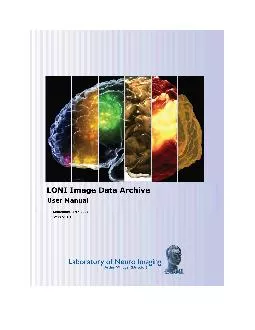PPT-101 VNA Questions You need to ask before implementing a vendor neutral archive
Author : importedferrari | Published Date : 2020-08-27
Copyright 2015 Fujifilm TeraMedica Inc Chapter 1 Implementation Information Make certain that you understand how and who will be providing the support that you
Presentation Embed Code
Download Presentation
Download Presentation The PPT/PDF document "101 VNA Questions You need to ask before..." is the property of its rightful owner. Permission is granted to download and print the materials on this website for personal, non-commercial use only, and to display it on your personal computer provided you do not modify the materials and that you retain all copyright notices contained in the materials. By downloading content from our website, you accept the terms of this agreement.
101 VNA Questions You need to ask before implementing a vendor neutral archive: Transcript
Download Rules Of Document
"101 VNA Questions You need to ask before implementing a vendor neutral archive"The content belongs to its owner. You may download and print it for personal use, without modification, and keep all copyright notices. By downloading, you agree to these terms.
Related Documents














